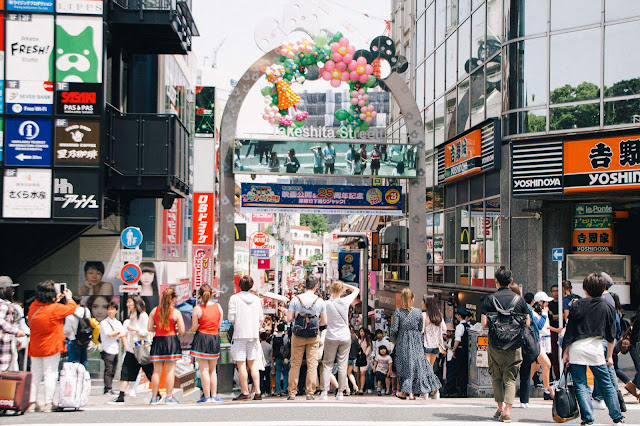Immerse in the hustle and bustle of Harajuku
Make your way to Harajuku’s Takeshita Street for shopping and people-watching. Takeshita Street contains tonnes of quirky shops and trinket sellers. So whether you’re looking for offbeat souvenirs or unique pieces to add to your wardrobe, you’ll find them here. Harajuku’s unofficial specialty is crepes, so grab one before heading toward Omotesando.👉 Takeshita Street 1-13-17 Jingumae, Shibuya-ku, Tokyo, Japan
Stop by Meiji Shrine and try on traditional Japanese attire
👉 Meiji Shrine 1-1 Yoyogikamizonocho, Shibuya-ku, Tokyo, Japan
Dine and shop along Omotesando
First, you might want to head straight to 76Cafe for a late lunch of taco rice, an Okinawan dish that combines classic taco ingredients with rice instead of tortillas. Then, along Omotesando, you’ll find luxury goods and some of the most impressive architecture in the world. Many of the best shops, including second-hand and vintage stores, can be found in the winding back alleys, so don’t be afraid to explore.👉 76 Cafe 4-9-2 Jingumae, Shibuya-ku, Tokyo, Japan
Check out the Shibuya Crossing and enjoy a ramen dinner
Head to Shibuya to check out the sights, including Hachiko, Shibuya Crossing, and the iconic Shibuya 109 mall. It also has endless options when it comes to food. Try ramen at a restaurant where vending machines take your order instead of people, find sushi go round joint where you order from a tablet, or check out Tengu Sakaba for izakaya fare and a friendly atmosphere.👉 Shibuya Station 2 Dogenzaka, Shibuya-ku, Tokyo, Japan
Read more: Street food in Tokyo, dishes that you should try once
Drop by Tokyo’s entertainment district, Kabukicho
If you’d like to make it an early night, head to Shinjuku to wander the alleys of Kabukicho, and grab a drink in the district’s famed Golden Gai. Otherwise, stay in Shibuya and spend the night at one of the many live music venues, clubs, or DJ bars in the area.👉 Golden Gai, 1 Kabukicho, Shinjuku-ku, Tokyo, Japan
Source the culture trip












